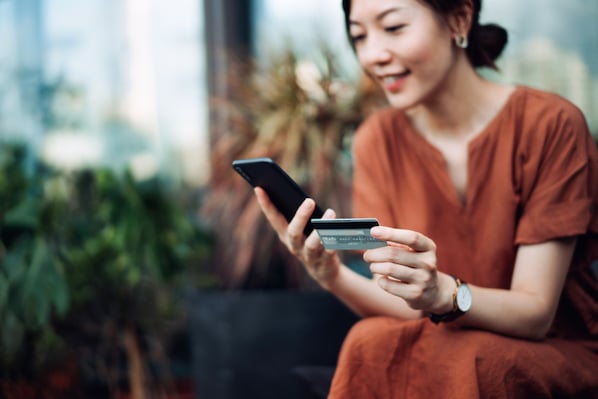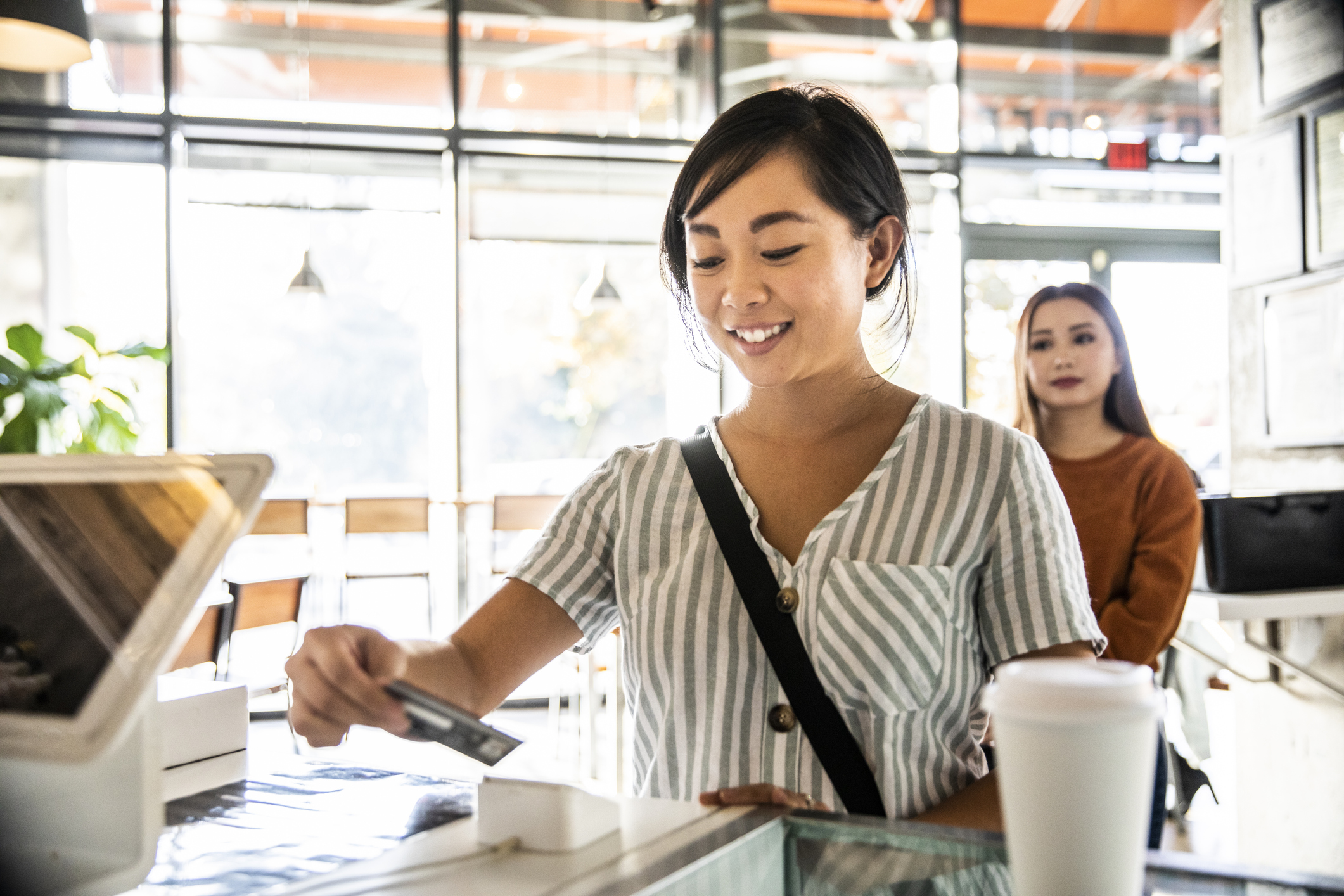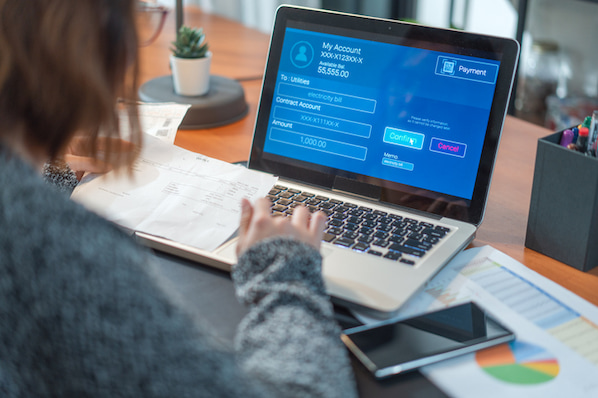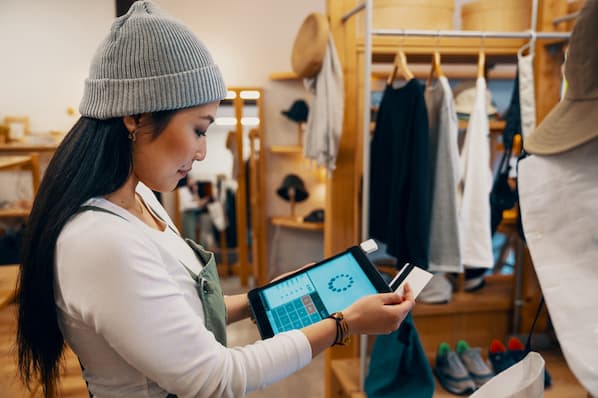Imagine it’s the year 3000. You drive your hover car to the plutonium fuel station. You buy snacks and pay for everything with a wave of your hand.
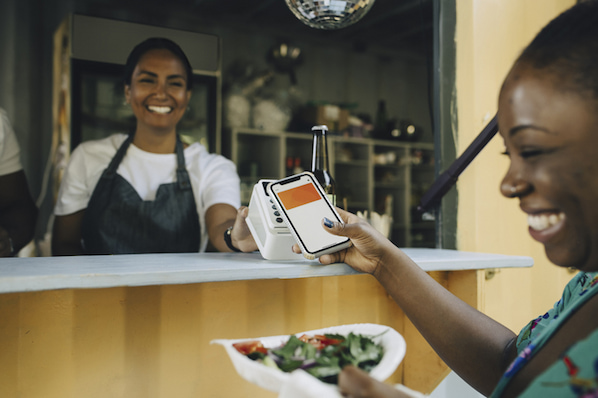
If you have a tap card, that last part is already possible. In fact, it’s been possible since the year 1995. But in the last few years, more and more people are turning to contactless payments.
So, how do they work? And are they safe? And, more importantly, how can you make or accept contactless payments?
What is a contactless payment?
Contactless payment is a way to make a purchase with your debit or credit card, but without swiping the card or entering your PIN. It uses radio-frequency identification (RFID) and near-field communication (NFC) to securely exchange payment data. Contactless payments can be done by card, smartphone, or even smartwatch.
Examples of Contactless Payment
There are two common types of contactless payment. Though they do the same thing, they work slightly differently.
- Tap Pay or Tap Card - Simply tap your debit or credit card against the card reader. The reader gets your payment info from an RFID chip embedded in your card.
- Mobile Wallet - Hold your smartphone up to the card reader. An app like Google Pay, Apple Pay, or Samsung Pay connects to your credit card account.
Why do people use contactless pay?
While contactless payment has been around since the 90s, its popularity has grown exponentially during the COVID-19 pandemic. According to Visa, the number of Americans using Visa contactless cards grew by 150% between 2019 and 2020. A consumer study done by Mastercard saw similar growth, with participants citing “safety and cleanliness” as the main reason for using it. Contactless payments allow you to use your credit card without having to touch the same keypad as hundreds of other people.
Consumers love contactless payments because they’re faster, more secure, and more convenient than traditional credit cards.
Businesses love contactless payments because they reduce checkout times and offer stronger fraud protection.
What are the disadvantages of contactless payment?
So with all those advantages, why would anyone hesitate to use a contactless credit card? One reason is the higher risk of physical theft. Since tap cards don’t need a PIN, it’s easier to use a lost or stolen card.
To prevent this, many card issuers limit the dollar amount allowed per transaction. That limit may also be an inconvenience to some high spenders.
How do contactless payments work?
From the outside, it all seems very simple. You hold your pay card or smartphone up to a card reader and a purchase is made. On the inside, your credit card (or smartphone) is doing a high-tech handshake with the payment terminal. That handshake is made possible by a process called near-field communication or NFC.
NFC starts with a radio-frequency identification (RFID) chip embedded in your credit card. This chip doesn’t generate a signal or have any power of its own. Instead, it’s activated by a radio signal made by the card reader. This signal only works within a few centimeters, which is why it’s called “near field.”
When you place your card near the card reader, the radio signal prompts the RFID chip to share a one-time code. That code authorizes the payment processor to charge your account. Your personal details and banking information are never transmitted.
Smartphone payments follow the same process, except that they use an NFC antenna instead of an RFID chip.
How do contactless cards work?
Contactless cards work by placing the card’s RFID chip within a few centimeters of the card reader. When prompted, hold or tap the card against the contactless symbol. A sound, light, or onscreen instruction will show whether your purchase was approved or declined.
How do I know if my card is contactless?
You can tell if your card is contactless if it has a symbol called the contactless indicator. The indicator looks like a wi-fi symbol turned sideways, and will appear prominently on your debit or credit card.
You can tell if a card reader can accept contactless payment if it has the corresponding contactless symbol. This looks like a hand holding a card near the contactless indicator.
How safe is contactless payment?
Contactless payment is more secure against fraud than traditional credit cards.
Traditional cards rely on a magnetic stripe that stores your account number, name, expiration date, and verification code. This information isn’t encrypted, so it can be seen by anyone with a card reader. And it never changes, so it can be used an unlimited number of times until it’s reported as stolen.
Instead of transmitting personal data, contactless cards send a one-time code. Even if this code could be stolen, it would never work a second time.
Some people worry about thieves using RFID scanners to steal contactless card data, but that would be extremely difficult. Contactless readers use a very short-range radio frequency, so the scanner would need to be within a few centimeters of your card. Even then, most modern credit cards use encryption along with the code. Scanning and decrypting a code is a lot of effort for a one-time theft.
How do I activate contactless pay?
Activating a contactless debit or credit card is just like activating any other card. When you receive your card, you’ll be given a phone number or website that can be used for self-service activation. Many banks or card providers will require you to make a chip and PIN purchase before contactless payment will work.
Activating contactless payment from your smartphone depends on the model of your phone and which mobile wallet you choose. Check out the instructions below:
How to Accept Contactless Payments
If you want to accept contactless payments at your business, you’ll need two things: a merchant account and a contactless reader.
The simplest way to get both of these is to go through a payment service provider (PSP), like Stripe, Square, or PayPal. These third-party PSPs offer credit card processing for a small percentage of each transaction and often include free hardware with your account.
Pro Tip: Many payment processors integrate with HubSpot. This lets you automatically connect purchase history and payment activity with your customers’ accounts.
Other Ways to Accept No-Contact Payments
Tap cards and mobile wallets aren’t the only ways your business can offer no-contact payments. The more options you offer, the easier it is for your customers to make a purchase. Here are some other options you may consider:
- QR Code - Some payment processors, like PayPal, allow you to offer QR code payment. You display the code where your customers can easily scan it. Scanning the code connects your customer’s smartphone to your payment account, where they can finish the transaction. You can also use QR codes to accept eCheck and ACH payments by connecting HubSpot to apps like PayPal or QRTiger.
- Payment Link - The HubSpot payments tool lets you create secure, shareable links that can be sent by email or text. Clicking the link lets your customer make a payment by credit or debit card, eCheck, or ACH. You can even embed payment links within quotes or invoices to speed up the payment process.
- Peer-to-Peer Direct Deposit - Services like Venmo or PayPal can be extremely convenient for solo-run businesses. You just give your account name, and your customer can make an in-app payment.
Get Started Taking and Making Contactless Payments
No matter if you’re a customer or a small business owner, it’s time to bring your payment process into the future. Whether you’re making a purchase or making a sale, contactless payments make it faster, easier, and more secure.
Payments


![ACH API: What it is + How to Use it [+ Who Should Not]](https://2406023.fs1.hubspotusercontent-na1.net/hubfs/2406023/Imported_Blog_Media/ach-api.jpg)
![What is ACH credit [+ Is It Safe to Use?]](https://2406023.fs1.hubspotusercontent-na1.net/hubfs/2406023/Imported_Blog_Media/what-is-ach-credit.jpg)
